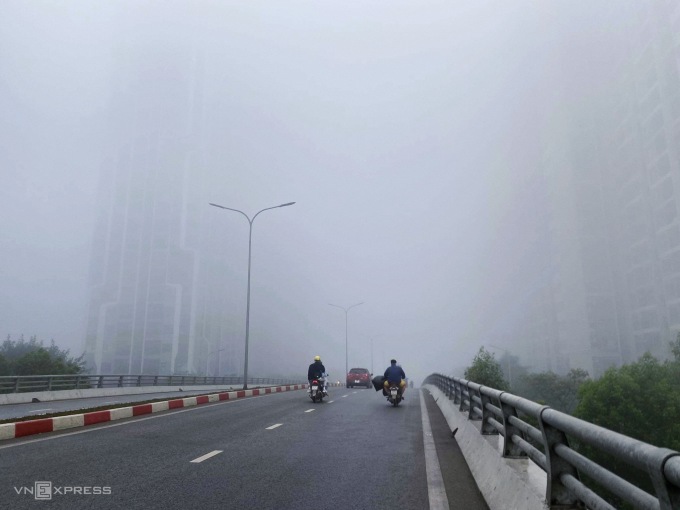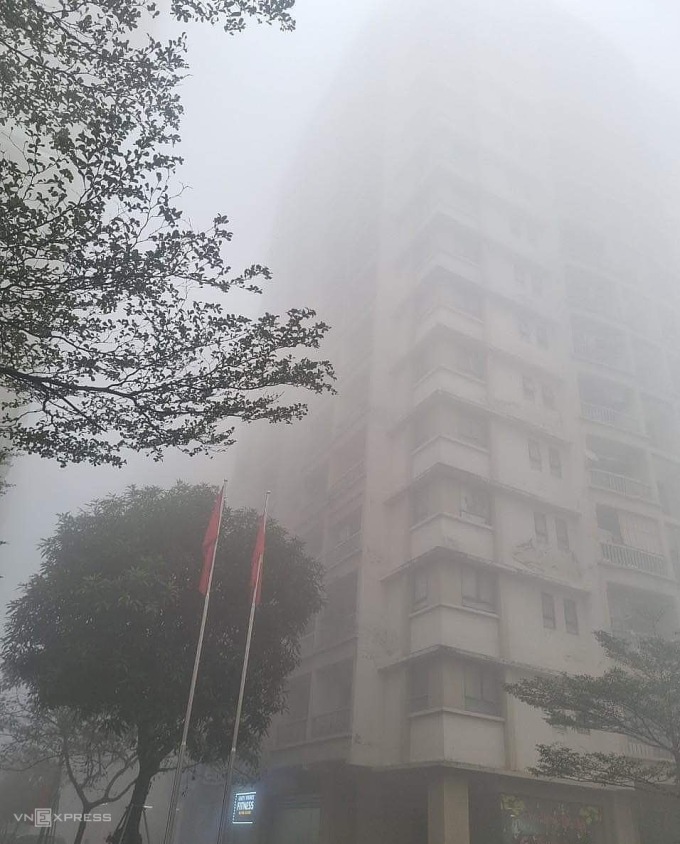On the morning of February 2, Hanoi experienced widespread fog, with the air pollution index exceeding 200, reaching a “harmful to health” level.
AirVisual, the global air quality measurement organization, reported that the air quality index (AQI) in various locations across the capital surpassed 200 on the morning of February 2, indicating a hazardous level of pollution. This poses health risks, particularly for the elderly and young children, making them more susceptible to respiratory diseases such as pneumonia, bronchitis, and respiratory failure. The forecast suggests that the indexes will remain at perilous levels, especially during the early morning hours in the coming days.
Similarly, on the PamAir air quality monitoring application, covering all 63 provinces and cities in Vietnam, many measurement points in the capital displayed red and purple air quality indexes, signifying dangerous levels.
The National Center for Hydro-Meteorological Forecasting predicts that the foggy, drizzly, and humid weather pattern will persist in the North and North Central regions in the next few days.
Meteorological experts attribute the air pollution phenomenon to continuous emission sources, coupled with humid weather and dense fog, causing airborne dust to accumulate at lower altitudes and disperse more extensively.

Dr. Le Hoan, Head of the Department of Endocrinology and Respiratory Medicine at Hanoi Medical University Hospital, explained that dense fog arises from high air humidity and low temperatures. This weather significantly impacts individuals with chronic respiratory conditions, the elderly, and young children, providing conducive conditions for the proliferation and spread of viruses and bacteria, leading to increased respiratory infections. Inhaling air in foggy conditions exposes individuals to cold air and high moisture, resulting in chills, cough, runny nose, and itchy eyes.
Moreover, fine dust and various household exhaust gases and impurities present in dense fog further irritate the respiratory system, causing breathing difficulties and increased discomfort. Fine dust, when entering the body, penetrates the airways, causing damage to the trachea and bronchi lining. It can also reach the alveoli, the gas exchange endpoint, causing inflammation and fibrosis, leading to various respiratory diseases.
Long-term exposure to fine dust can complicate diseases, causing chronic lung conditions. Additionally, fine dust of minuscule size penetrating into the alveoli and capillaries can enter the body’s circulation, resulting in cardiovascular damage, strokes, and brain damage with prolonged exposure.
Individuals with heart and respiratory issues, pregnant women, children, and the elderly are more vulnerable to fine dust. Prolonged exposure can lead to miscarriage, premature birth, birth defects, and even death.
Sudden temperature fluctuations during the day, alternating between dry and wet conditions, impact the body’s metabolism. It is advisable for young children, the elderly, and those with respiratory or heart conditions to exercise caution when going outdoors.

To mitigate the adverse effects of fog, experts recommend wearing masks correctly when outdoors and restricting outdoor activities during foggy and polluted weather. Individuals at higher risk should avoid early morning outings to minimize fog exposure. Ensuring indoor air quality by keeping windows closed until the fog dissipates is crucial.
Using a vacuum cleaner for cleaning carpets, sofas, and floors, and employing air purifiers to enhance humidity and purify the air, can be beneficial.
A well-balanced diet rich in vitamins from fruits and vegetables, along with increased water intake, is recommended. Moderate consumption of salt and fat, quitting smoking, and limiting alcohol intake contribute to overall health.
Monitoring blood pressure when possible and paying attention to one’s body are essential for proper health protection. Combining exercise and sports can enhance overall health and resistance.
Thuy An




